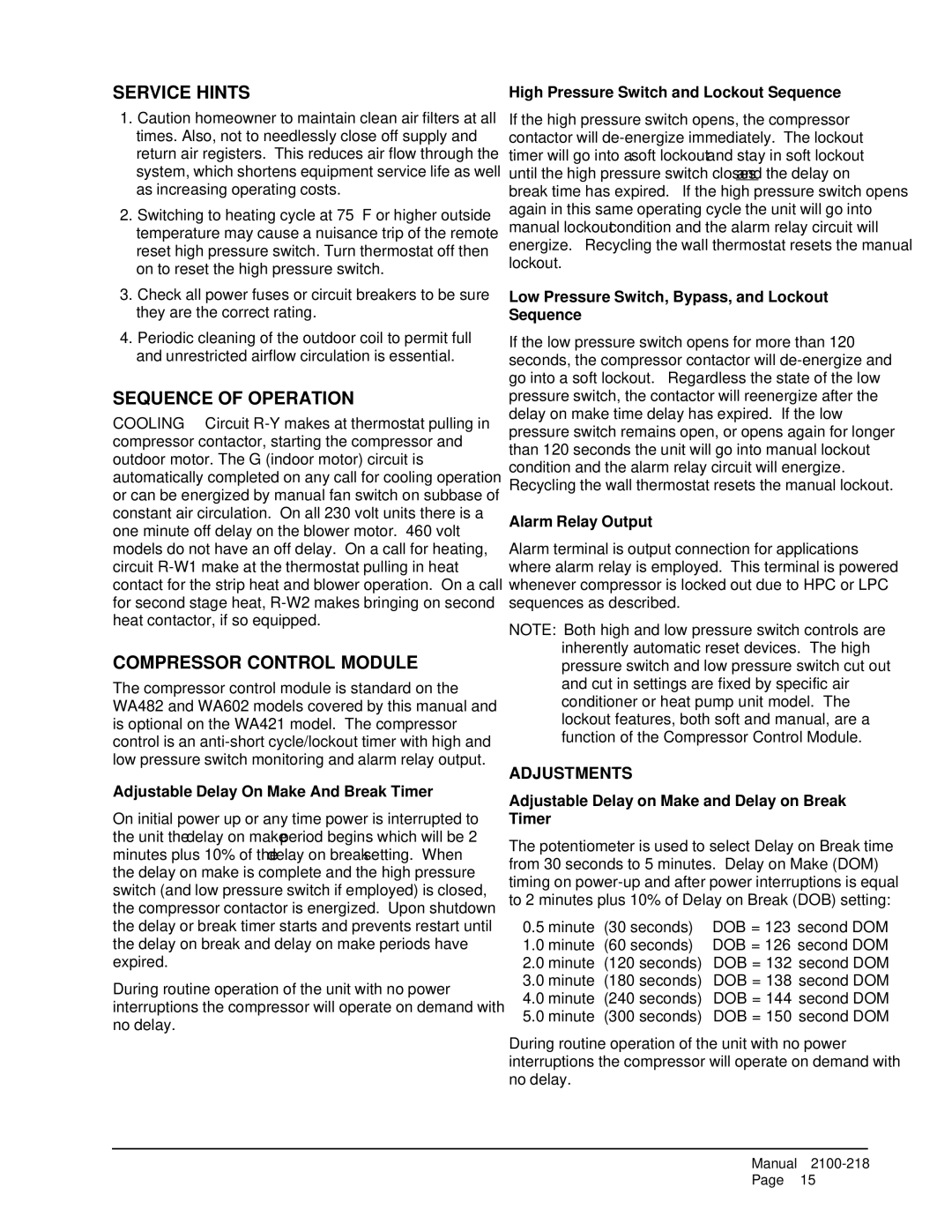WA482, WA421 specifications
Bard WA482 and WA421 are high-performance air conditioning units designed for commercial and industrial applications. These models are renowned for their exceptional cooling efficiency, durability, and versatile performance, making them suitable for a variety of settings, including schools, factories, and office buildings.One prominent feature of the Bard WA482 is its powerful cooling capacity. It has an impressive cooling output that can effectively manage indoor temperatures, even in the hottest conditions. This capability ensures optimal comfort for occupants while maintaining energy efficiency. Similarly, the Bard WA421 offers substantial cooling capacity, catering to smaller commercial spaces without compromising on performance.
Both models utilize advanced technology to enhance their operational efficiency. The units are equipped with a high-efficiency scroll compressor that minimizes energy consumption while delivering consistent cooling. This technology allows businesses to reduce their energy costs significantly, contributing to environmental sustainability.
Another significant characteristic of Bard WA482 and WA421 is their robust construction. Built with heavy-gauge galvanized steel, these units are designed to withstand tough environmental conditions. This durability ensures a long operational life, reducing the need for frequent repairs and replacements. The units are also corrosion-resistant, making them ideal for coastal or humid regions.
Efficiency is further enhanced by the inclusion of a multi-speed fan that allows for better airflow management. This feature enables the units to adjust their functioning based on the current cooling demand, optimizing energy use and minimizing noise levels. Consequently, users experience a comfortable environment without disruptive sound.
Maintenance is made simple with these models thanks to their accessible design. The units feature removable panels that provide easy access to internal components for routine servicing. This design minimizes downtime and helps maintain the overall efficiency of the system.
In terms of versatility, Bard WA482 and WA421 can be customized with various kits and options, including digital thermostats and advanced control systems. This adaptability enables users to tailor the cooling solutions to their specific needs, enhancing overall satisfaction.
In summary, Bard WA482 and WA421 stand out in the commercial air conditioning sector due to their impressive cooling capacity, energy-efficient technologies, robust construction, and ease of maintenance. These characteristics make them a reliable choice for businesses looking to maintain a comfortable and sustainable indoor environment.
